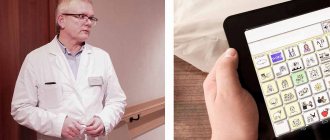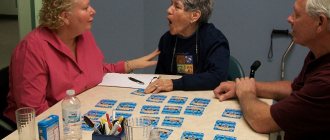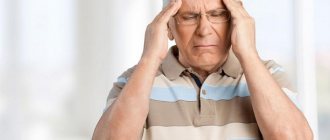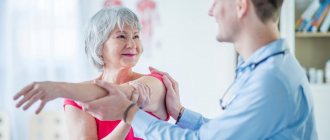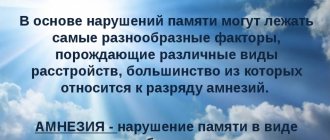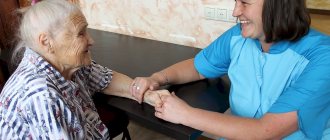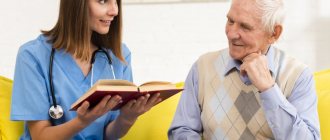Strokes are severe lesions of brain tissue caused by acute disorders of cerebral circulation. Against the background of prolonged spasm of the great vessels or their blockage, the ischemic form develops, and with rupture of the vascular wall and subsequent hemorrhage, the hemorrhagic form develops. In the first case, the symptoms may increase gradually, but in the second they always appear abruptly. At the same time, cerebrovascular insufficiency gives quite serious complications, one of them is paralysis and impaired fine motor skills after a stroke.
The recovery of such patients takes a very long time, but rehabilitation measures are needed as early as possible. And they need to be done under the supervision of experienced doctors. The specialists of the Verimed clinic will help the patient return to a full life.
What are fine motor skills?
Fine motor skills are clear, purposeful movements of the hands and fingers, controlled by the central nervous system. They are possible only with impeccably coordinated work of the brain, organs of vision and impulse-conducting nerves. There is an inextricable connection between motor activity and cognitive functions. Therefore, to fully restore fine motor skills after a stroke, not only the development of muscles and joints is required, but also exercises aimed at activating mental processes.
Roszdravnadzor has registered a smart glove for rehabilitation
The Senso Rehab training glove, which helps to effectively restore fine motor skills after a stroke, was launched on the market in the past by Krasnoyarsk, and now by Moscow (Skolkovo resident).
The Senso Rehab training glove, which helps to effectively restore fine motor skills after a stroke, was launched on the market in the past by Krasnoyarsk, and now by Moscow (Skolkovo resident). “Initially, our glove was created for virtual reality,” says company CEO Artem Badyukov. “When you travel through the virtual world, not only vision is important, but also the tactile sense. So that you can take or touch something in it, we have developed a glove that, thanks to sensors and vibration motors, can repeat the movements of the fingers and hand, creating the illusion of touch. It was made so accurately that it can measure the position of the fingers and the position of the hand with an accuracy of one hundredth of a degree.”
Semyon Prokopenko, Doctor of Medical Sciences, Professor, Head of the Department of Nervous Diseases of the Krasnoyarsk State Medical University, Chief Neurorehabilitologist of the Siberian Federal District, learned about the smart glove. “We have been dreaming of such a glove for 20 years,” he said. “We have theoretically developed techniques that allow us to use computer programs to restore fine motor skills after a stroke, but until the advent of the glove we could not try them.”
It was also important for doctors that the glove provides biofeedback, that is, the patient, while performing exercises, sees the reaction of his body. “Gadgets with biofeedback increase the efficiency of recovery by two and a half times,” says Artem Badyukov. “This has been scientifically proven, and now confirmed by clinical studies that we conducted to obtain a registration certificate from Roszdravnadzor.” In addition, rehabilitation using a smart glove can be contactless, that is, under the remote supervision of a rehabilitation physician, which is especially valuable during a pandemic.
With the help of a smart glove, recovery occurs during the game. The glove does not give any impulses to the muscles - the person himself forces them to move, the gadget only reads and measures his movements. By doing the exercises prescribed by the doctor, the patient moves his fingers within the limits of his capabilities, and based on his movements, the game adapts to him, encouraging him to do more and more of these movements. “If he has even the slightest rudiments of hand movement, then even an imperceptible movement of his fingers will, for example, raise the airplane higher and higher,” explains Badyukov.
This motivates a person, because he wants to make the airplane fly. Another motivation is that the fine adjustments of the glove make it possible to notice even the most minor changes in the behavior of the hand. “When moving pencils from place to place or doing exercises in front of a mirror, the patient does not see the dynamics,” says the general director of SensoMed. “But the glove can tell him: your finger spread has changed by one degree compared to last week,” and he understands “I didn’t do it in vain.” The doctor also sees these changes and can adjust the course of rehabilitation.
However, doctors have yet to master this unusual device, because the glove became officially available to medical institutions in Russia only in May. In addition, in order for it to get into offices and rehabilitation centers, SensoMed still has to go through the government procurement procedure, which will take at least six months. “We do all this, of course, but we must remember that in Russia about 450 thousand people suffer a stroke every year and at least half of them need rehabilitation,” emphasizes Artem Badyukov.
The market for equipment for medical rehabilitation in Russia is very small. “Even the large-scale construction of clinics will not solve this problem if they have only one rehabilitation room,” Badyukov complains. “Every patient needs to have a half-hour lesson, so in an eight-hour working day you can see only 16 people. Rehabilitation takes from one month to six months. Even if patients come every other day, one office can handle no more than 2 thousand people a year. With such volumes, we will not be able to arrange large-scale supplies of gloves to Russian medical institutions. Of course, you can buy a glove and practice at home yourself, but, firstly, it costs 49 thousand rubles, which not everyone can afford, and secondly, if you perform the exercises without supervision from a doctor, you can harm yourself. Therefore, we are going to obtain European and American certificates and enter foreign markets.”
Elena Tueva
Symptoms of impaired hand motor skills after a stroke
Clinical signs of motor activity disorders are:
- a sharp decrease in muscle strength (until complete disappearance);
- rapid muscle fatigue;
- severe impairment of joint mobility due to contractures;
- impaired coordination of movements;
- reduction or loss of local sensitivity.
Mobility and coordination may be further affected by pain and tissue swelling.
What interferes with the recovery of motor skills after a stroke?
Improving the motor activity of the hands and restoring fine motor skills after acute cerebrovascular accidents is a rather complex process. It can be accelerated by the use of effective treatments, or it can be slowed down. The reasons for the slowdown (and sometimes impossibility) of rehabilitation may be:
- incorrect diagnosis;
- late treatment;
- serious disturbances in the nutrition of local tissues (circulatory disorders);
- injuries or chronic pathologies of nearby areas;
- depressive and apathetic states of the patient;
- other mental disorders.
When to start training
After suffering an acute cerebrovascular accident, exercise therapy should be started as early as possible, even if the patient is in the intensive care unit. If the patient is unconscious, then they limit themselves to passive exercises, massage, and rarely use exercise equipment. Typically, rehabilitation measures begin on the 2nd day, continue throughout the recovery period (up to a year), then recovery slows down and training is modified.
During the early recovery period (up to six months after a stroke), constructive changes in motor function and relief of muscle hypertonicity are possible. If a contracture has already formed, it will be very difficult to develop it, and it will take much more time. At the late recovery stage (from 6 to 12 months), if mild symptoms persist after a stroke, visiting the gym is allowed.
Treatment of a stroke is always long-term, step-by-step, since it takes a lot of time for active brain cells to take over the function of dead structures so that new connections are formed between neurons.
How is motor skills restored?
Combating hand motor dysfunction after a stroke requires an integrated approach. It is important to start treatment as early as possible. Timely therapy gives a much greater chance of quickly achieving positive results.
Please note: It is important to remember that every day without training contributes to the formation of a stereotype of lack of movement in the central nervous system. The direct consequence is tissue trophic disorders; Muscle atrophy and bone decalcification develop.
The main methods for developing hand motor skills in the recovery period after a stroke are massage and gymnastic exercises. Hands and fingers contain a huge number of nerve endings. If there is not an adequate signal for movement from the central nervous system, it is important to direct it from the fingers to the brain. Local massage prescribed to patients helps restore the transmission of nerve impulses - the so-called. reflex arc. In addition, the physical effect on tissue helps to improve local blood flow (microcirculation) and, accordingly, improve tissue trophism. Thanks to professional massage, used in combination with other techniques, you can quickly restore the ability to make active, precise movements, as well as tactile sensitivity.
Another important point when restoring fine motor skills after a stroke is regular exercise. Such exercises serve to prevent further decline in motor activity, prevent the development of muscle and joint contractures and promote functional restoration. Regular classes under the guidance of doctors help patients after a stroke quickly adapt to living conditions. The possibility of complete self-care is one of the most important tasks of rehabilitation techniques.
All exercises must be performed with both hands synchronously. Usually the mobility of one of them is impaired, and symmetrical actions will significantly speed up recovery. The duration of gymnastics should be no more than 8-10 minutes per hour, so as not to develop significant fatigue. It is important to repeat the set of movements regularly in order to re-form the muscle reflex and motor stereotype.
Examples of exercises:
- Clench your fingers into a fist, increasing your efforts in the final phase of the movement. Slowly unclench them, trying to imagine the action of each muscle.
- Place your hands on a horizontal surface with your palms facing up. Spread your fingers a little. Raise your little fingers while trying to keep the other fingers still. Lock them in this position for 3-5 seconds and relax. Perform a similar exercise sequentially for all other fingers.
- Place your palms on the table in the same way as in the previous exercise. Alternately make circles (clockwise and counterclockwise) with raised fingers, starting with the little finger.
To develop fine motor skills when recovering from a stroke, it is useful to use available materials. An excellent effect can be achieved by such actions as sorting through cereals, modeling from plasticine, fastening buttons and tying knots in a rope.
Training fine motor skills of the hands when restoring a bedridden patient
Gavrilkina Oksana Sergeevna Chief rehabilitation doctor, physical therapy and sports medicine doctor,
More about the doctor
When it comes to fine motor skills , people usually think of infants or preschool-aged children. However, there are several other categories of people who need to perform simple exercises that restore the mobility of the joints of the hand, fingers, and feet. These include:
- children born with cerebral palsy;
- patients who have had a stroke;
- elderly people (over 65 years old);
- bedridden patients, regardless of the disease history.
All joints and muscles of the body, regardless of their size and location, need constant movement. With forced inactivity, muscle tone is quickly lost, finger sensitivity decreases, and joint mobility decreases. This can lead to complete atrophy of the limb.
Ways to develop fine motor skills of the hands.
There are several ways to improve and restore the motor activity of the joints of the hands and fingers. These may include interaction with other people and the use of mechanical devices. For example:
- massage;
- sorting, pouring small objects;
- exercises using rings and balls that are placed on tripods;
- exercises with horizontal bars, rings.
Features of improving fine motor skills of the hands in bedridden patients.
The main problem that people face when caring for patients who cannot get out of bed is the patient’s deterioration in the ability to move, apathy, and deterioration in the quality of speech . All this is due to the weakness of the muscular system due to forced long-term inactivity. This condition is especially dangerous for older people, in whom complete muscle atrophy can occur within a month after the start of bed rest.
The patient’s intelligible speech is also associated with the motor activity of the fingers and hands. Understanding and reproducing words directly depends on motor impulses arising in the upper limbs. With regular training of fine motor skills of the fingers, a significant improvement in the patient’s speech quality can be achieved, which is very important for bedridden patients who have suffered a stroke .
An even bigger problem may be the patient's reluctance to do the exercises. Here tasks in the form of a game with poetry or musical accompaniment will help.
Exercises to develop fine motor skills of the hands
If a bedridden patient is able to independently engage in creative activities such as knitting, embroidery or drawing , these are the best methods for maintaining finger motor skills at the desired level. But often bedridden patients need simpler exercises that can be done independently or under the supervision of a caregiver. Some of them:
- Alternately clenching into a fist and straightening your fingers;
- Rubbing your palms together in a circular motion;
- Consecutive flexion, extension of fingers;
- Rolling a glass or metal ball in the palms;
- Sprinkling fine sand with your hands;
- Separating objects of different shapes and sizes into categories (sorting peas, beans, buckwheat mixed into one pile is good);
- Grabbing moderately heavy objects (books, glasses, water bottles), lifting an object held in the hand 20-30 cm above a horizontal surface;
- Attaching/removing clothespins from rope or wire;
- Rubbing your palms with hand skin cream (especially suitable for women of any age);
- Modeling from plasticine or soft clay.
Mechanical devices for the development of lost fine motor skills of the hands
The medical industry offers many options for devices that help bedridden patients during the rehabilitation period to improve the quality of life. The simplest of them are inserts made of wool or foam rubber, by squeezing them in the hand, the patient reduces muscle spasm and performs an independent massage of the palm and fingers. Pyramids like those for children are also very popular; they not only stimulate the work of the small joints of the hand, but also restore the usually impaired color perception. There are combined devices that include elements of a pyramid, expanders for compression, containers with small balls for sorting and massage.
Needle applicators have also proven themselves to be excellent, affecting sensitive points on the patient’s palm and improving blood circulation in the extremities, which is also important for the normal functioning of the joints and muscles of the hand.
The influence of psychological attitude in the development of hand motor skills
A stroke often becomes a real tragedy for both the patient and his family. Brain damage provokes a decrease in mental activity and emotional lability. The patient can, as it were, “give up” on himself; he develops indifference, periodically replaced by outbursts of irritability and even anger. Apathy can be so great that a person does not want to do any exercises, try to get up, or move in any way.
To the objective reasons for the decrease in psychological activity are added internal experiences caused by a change in the usual lifestyle, the inability to look after oneself, and make some kind of global decisions. Immobility, isolation, fear of becoming a burden, fear of the future turn an active and freedom-loving person just yesterday into a completely weak-willed and apathetic one. He loses faith in his own strength, the possibility of developing hand motor skills and returning to his former life. Against this background, depression may appear, which will only worsen the situation. Such a person definitely needs not only the moral support of family and friends, but also the help of a doctor.
The experience of psychologists and psychiatrists allows us to quickly and accurately determine the root of the existing problem and find the “key” to both the patient himself and his relatives. Specialists will select the correct treatment regimen that will help motivate the patient to perform the necessary exercises, eliminating the main manifestations of apathy, depression and other mental disorders. And with faith in a speedy recovery, the restoration of fine motor skills of the hands after a stroke will go much faster.
Don't let a decadent mood ruin your future life - just call us now!
HOW REHABILITATION IS CARRIED OUT AFTER STROKE AT RCMC
The main components of the rehabilitation program after stroke at the RCMC are:
- assessment of the patient’s clinical condition;
- optimization of pharmacological treatment, selection of optimal drug therapy;
- physical rehabilitation – improvement of motor activity;
- psychosocial rehabilitation;
- diagnosis and control of risk factors for cardiovascular diseases;
- teaching patients and their relatives the basics of lifestyle after a stroke and protection against disease progression;
- monitoring the effects of rehabilitation and adjusting the program at each stage of treatment.
The effectiveness of a rehabilitation program after a stroke:
- minimizes the risk of complications;
- preserves the quality of life as much as possible and improves the prognosis of the disease;
- helps restore health and mental activity;
- allows you to avoid disability and return to normal work activities;
- reduces the risk of recurrent strokes and other cardiovascular complications;
- improves the patient's physical condition;
- normalizes hemodynamics
- improves motor activity;
- improves psycho-emotional state;
Duration of the program:
Duration 14-21 days. The effectiveness of treatment depends on the number of days.
Rehabilitation programs widely use robotic mechanotherapy - the use of robotic devices in the treatment of patients to train the function of arms and legs with feedback in a gaming or virtual environment. The advantage of robotic therapy is the higher quality of training compared to classical therapeutic exercises due to their longer duration, the accuracy of repeated cyclic movements, a constant training program, and the availability of tools for assessing the success of the exercises with the ability to demonstrate to the patient.
Rehabilitation department equipment:
- Lokomat - Cosmosrobowol-K - a simulator for restoring and forming a correct gait.
- Kinetec Centura - a simulator for passive development of the joints of the upper limbs
- Kinetec Perfoma - a simulator for passive development of the joints of the lower extremities
- Kinetec Breva - a simulator for passive development of the foot
- THERA Trainer Tigo is a unique rehabilitation simulator for combined training and restoration of functions of the upper and lower extremities
- ERIGO is a rehabilitation robotic complex designed for early verticalization of patients with severe neurological diseases
- Motomed Letto-2 - a simulator for passive and active kinesitherapy of the upper and lower extremities of patients on bed rest
- TYMO is a therapeutic platform that allows testing and training of movements, weight transfer and targeted use of force in patients
- PABLO - diagnostic and therapeutic rehabilitation system for the upper limbs, training of hand functions and fine movements of the hand
- AMADEO is a mechanotherapeutic complex for restoring fine motor skills of the hand, equipped with biofeedback.
Treatment program
- Round-the-clock monitoring of a patient after an ischemic stroke - a medical post and an intensive observation and therapy ward.
- The patient’s attending physician in the rehabilitation program after a stroke is a neurologist of the highest category.
- Diagnostic block (timing is determined individually at the beginning and end of treatment)
- biochemical blood test: total cholesterol, high and low density lipoproteins, triglycerides, atherogenic index, bilirubin, creatinine, urea, uric acid, transaminases, potassium, calcium, magnesium, sodium, etc.
- clinical blood test - coagulogram,
- electrocardiography, Holter-Monitoring BP + ECG - ultrasound of blood vessels of the central nervous system - neuroimaging: MRI, CT scan of the brain
- Neuropsychological diagnostics and neuropsychological correction of impaired higher mental functions (speech, memory, attention, perception).
- Speech therapy classes
- Advisory block: consultations with specialized specialists of the highest category: cardiologist, pulmonologist, therapist, rehabilitation specialist, psychotherapist, somnologist, nutritionist
Treatment block
